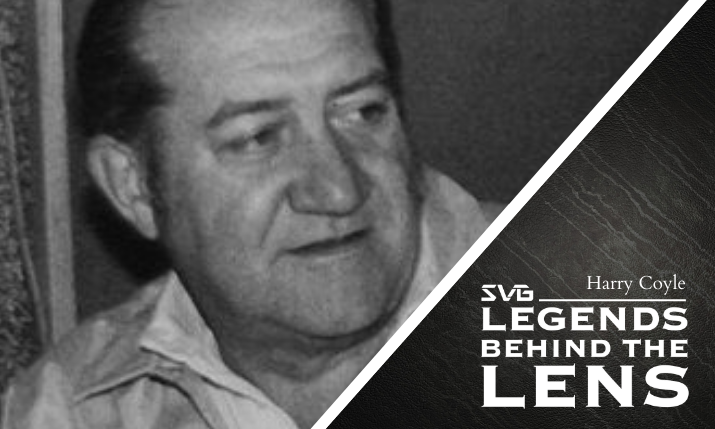Legends Behind the Lens: Harry Coyle
One of sports TV's greatest directors called baseball's shots for more than four decades
Story Highlights

The story of American sports television is engrained in the history of this nation, rising on the achievements of countless incredible men and women who never once appeared on our screens. During this pause in live sports, SVG is proud to present a celebration of this great industry. Legends Behind the Lens is a look at how we got here seen through the people who willed it to be. Each weekday, we will share with you the story of a person whose impact on the sports-television industry is indelible.
Legends Behind the Lens is presented in association with the Sports Broadcasting Hall of Fame and the SVG Sports Broadcasting Fund. In these trying times — with so many video-production professionals out of work — we hope that you will consider (if you are able) donating to the Sports Broadcasting Fund. Do so by visiting sportsbroadcastfund.org.
___________________________
Anyone who has ever watched a World Series game is familiar with the work of Harry Coyle. A director who spent 42 years creating the on-air look of baseball games, he was the thread connecting the first 35 televised World Series, and his innovations changed productions throughout the sports world.
“Harry was one of those rare, most fortunate people whose love was what he did so well,” says Michael Weisman, former Executive Producer of NBC Sports. “His interest and his love, sports and telling stories with his cameras, were what he did for a living.”
After serving as a fighter pilot in the Armed Forces, Coyle was a part-time director at NBC before joining the network fulltime in 1955, where he quickly became a fixture in the world of baseball. Coyle took the black-and-white, three-camera broadcasts of the 1940s into the 14-camera future, introducing hand-held cameras, close-ups, and player reactions into his 36 World Series and 27 All-Star Game productions.
In the 1950s, Coyle introduced a center-field camera that allowed viewers to follow the path of a pitch all the way into the catcher’s mitt. The angled camera, now standard in baseball coverage, was a radical departure from the above home-plate, infield angle.
“He was a big proponent of the close-up. He really believed that the eyes were the window to the soul. He pioneered the reaction shot, showing what players were doing not just on the field but on the sidelines and in the dugout.” — Michael Weisman, former executive producer of NBC Sports
Coyle’s most famous reaction shot came in Game Six of the 1975 World Series. Boston’s Carlton Fisk led off the bottom of the 12th inning, and Coyle directed the cameraman inside the Green Monster to follow the ball, but a large rat had stolen the cameraman’s attention. Petrified, the cameraman never moved as Fisk hit the game-winning home run, and he caught Fisk as he frantically motioned for his left-field hit to stay fair. It was one of the first shots of an athlete’s emotion captured in the moment and made Coyle a directorial prodigy.
Although the director was as powerful an executive as anyone the business, he never acted like one.
“He was never pretentious, which you might expect from someone with his success and stature,” Weisman says. “He was a man of the people. He was more comfortable with the crew, the engineers, and the camera guys than with the team owners and network executives that sought out his company.”
Coyle’s gruff voice and John Wayne-like demeanor were found more often in trucks than in executive suites.”Instead of eating in the team executive room, he would be happier with a Big Mac and a Coke, sitting in the truck with his boys,” Weisman says. “He called his cameramen his boys, and he was very much one of them.”
In addition to the close-up shots that distinguished his work, Coyle also introduced slow motion and instant replay to baseball games, forever focusing on the story, not the statistics.
“Although there’s a long list of technical contributions that Harry brought, I think his greatest contribution is that he’s a storyteller with his cameras,” Weisman says. “Harry told the story with his cameras while the people he worked with” Hall of Fame broadcasters like Red Barber, Curt Gowdy, Vin Scully, and Bob Costas “told the story with their words.”
Since Coyle’s retirement in 1989, little has changed in baseball production, which is a testament to the standard he set. There may be more than one way to shoot a game, but Coyle found the best way to share baseball’s stories with the world, and his work remains the yardstick against which every production is measured.
The video in this profile was originally produced in 2007. For more on the life and career of this industry legend, visit their profile at the Sports Broadcasting Hall of Fame.
